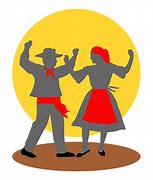Chapter 1:
Spring is universally celebrated
as a season of rebirth, renewal, and joy.
After months of cold and darkness, nature
awakens with blooming flowers, longer days, and warmer weather. Yet, for a
significant number of people, spring brings an unexpected and paradoxical
emotional burden—depression. While Seasonal Affective Disorder (SAD) is
commonly associated with winter, a lesser-known but equally impactful form
occurs in spring and early summer. This chapter explores why spring, a time of
apparent vitality, can trigger depression, the differences between spring-onset
and winter-onset SAD, and how historical and cultural perspectives have long
acknowledged the melancholy of spring.
Why Spring, a Season
of
Renewal, Triggers Depression for Some
At first glance, it seems counterintuitive that spring—a season associated with energy and growth—could lead to depression. However, research suggests several biological, psychological, and environmental factors that contribute to spring-onset depression.
1. Biological Factors:
The Role of Light and Serotonin
While winter SAD is
linked to reduced sunlight and lower serotonin levels, spring depression may
stem from an *overabundance* of light. Increased daylight hours can disrupt
circadian rhythms, leading to sleep disturbances. Some individuals may
experience a kind of "overstimulation," where rapid changes in light
exposure affect mood regulation.
Additionally, serotonin,
a neurotransmitter associated with well-being, may not function optimally in
some people during spring. While serotonin typically rises with increased
sunlight, those predisposed to depression may have an abnormal response,
leading to agitation or dysphoria instead of happiness.
2. Seasonal Allergies
and Inflammation
Spring allergies, caused
by pollen and other environmental triggers, may contribute to depressive
symptoms. Research suggests that inflammatory responses from allergies can
affect brain chemistry, increasing the risk of depression. The fatigue,
congestion, and discomfort associated with allergies may also exacerbate low
mood.
3. Social and
Psychological Pressures
Spring is often
portrayed as a time of new beginnings—people are expected to be energetic,
social, and productive. For those already struggling with mental health, this
societal pressure can intensify feelings of inadequacy. Seeing others enjoy the
season while feeling detached or unhappy can lead to guilt and
self-criticism.
Moreover, spring is associated with major life
transitions—graduations, weddings, career changes—which, while positive, can
also be stressful. The contrast between external expectations and internal
emotional struggles can deepen depressive symptoms.
4. Reverse SAD: A
Distinct Phenomenon
While winter SAD is
characterized by lethargy, overeating, and hypersomnia, spring-onset SAD
(sometimes called "reverse SAD") presents differently. Symptoms may
include:
- **Agitation and
irritability**
- **Insomnia or reduced
need for sleep**
- Decreased appetite
- Anxiety and
restlessness
This suggests that spring
depression is not merely an extension of winter blues but a distinct condition
with its own biological and psychological mechanisms.
**Differences Between
Spring-Onset and Winter-Onset SAD**
Understanding the
differences between these two forms of seasonal depression is crucial for
proper diagnosis and treatment.
| **Feature**
| **Winter-Onset SAD**
| **Spring-Onset SAD**
|
|----------------------|------------------------------------------|------------------------------------------|
| **Primary Symptoms** |
Low energy, oversleeping, weight gain | Agitation, insomnia,
weight loss |
| **Mood Profile**
| Lethargy, sadness
| Anxiety, irritability
|
| **Light
Influence** | Lack of sunlight worsens mood
| Excess light may trigger symptoms
|
| **Neurochemistry**
| Low serotonin, high melatonin
| Possible serotonin dysregulation |
| **Treatment**
| Light therapy, vitamin D, psychotherapy | Dark
therapy, mood stabilizers, CBT |
While winter SAD is
often treated with light therapy, spring depression may require different
approaches, such as managing light exposure (e.g., using blackout curtains) and
addressing underlying anxiety.
**Historical and
Cultural Perspectives on Spring Melancholy**
The phenomenon of spring
depression is not new; it has been documented in literature, medicine, and
folklore for centuries.
**1. Ancient and Medieval
Views**
Hippocrates (460–370
BCE) observed that mental illnesses often worsened in spring, attributing it to
imbalances in bodily humors. Similarly, medieval physicians noted that
"spring fever" could manifest as both physical illness and emotional
distress.
2. Poetry and Literature
Many poets have captured
the bittersweet nature of spring. Alfred Lord Tennyson wrote in *Locksley
Hall*:
> *"In the
spring a young man’s fancy lightly turns to thoughts of
love."*
Yet, this romantic ideal
contrasts with the melancholic reflections of other writers. T.S. Eliot
famously opened *The Waste Land* with:
> *"April is the
cruellest month, breeding / Lilacs out of the dead land, mixing / Memory and
desire, stirring / Dull roots with spring rain."*
These lines encapsulate
the duality of spring—its beauty intertwined with a sense of loss and
unease.
3. Folklore and Superstitions
In some cultures, spring
was considered a dangerous time when spirits and emotions were unsettled. The
term "spring fever" originally referred not just to excitement but
also to a restless, sometimes depressive state. Traditional societies often
held rituals to ward off springtime melancholy, recognizing its psychological
toll.
4. Modern Recognition
Despite historical
awareness, modern psychiatry has only recently begun to study spring depression
systematically. The Diagnostic and Statistical Manual of Mental Disorders
(DSM-5) acknowledges SAD but does not yet differentiate between seasonal
subtypes as clearly as emerging research suggests is necessary.
Conclusion: Embracing the Complexity of Seasonal Mood
The paradox of spring
depression challenges the simplistic notion that more sunlight and warmth
universally improve mood. For those affected, spring’s vibrancy can feel
overwhelming, even oppressive. Recognizing the differences between seasonal
depression subtypes is essential for effective treatment, while historical
insights remind us that this phenomenon is deeply rooted in human experience.
As we continue to
explore the complexities of seasonal mood disorders, it becomes clear that
mental health is not a one-size-fits-all experience—even in a season as
seemingly joyful as spring. Understanding and validating these experiences is
the first step toward offering meaningful support to those who find spring not
a time of renewal, but of unexpected sorrow.
please support me with coffee cup
https://buymeacoffee.com/alaaeldin1s
https://sites.google.com/view/zazzlestores/home












